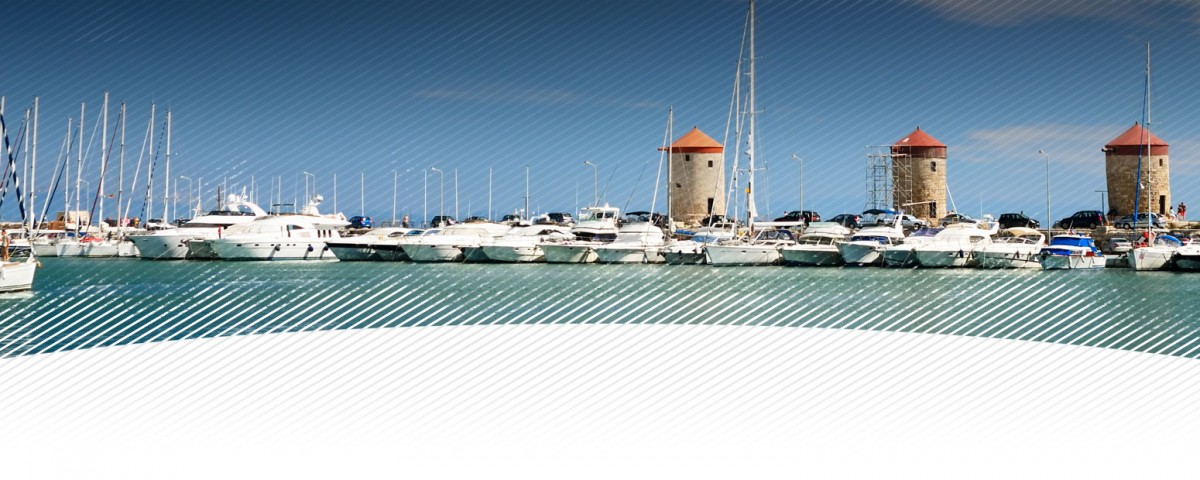- Have any questions?
- +302241052038
- art@artisticvillage.gr
A few words about Rhodes

Ceramic art and tradition in Rhodes
February 25, 2015A few words about Rhodes

The island of Rhodes in the south eastern Aegean Sea is the largest of the Dodecanese Islands. Rhodes is diamond-shaped, and the central area of the island is covered by a large mountainous area which is made up of three connecting mountains. The island’s geographical form does not have any outstanding features. The high percentage of forest cover is one of the island’s main characteristics. The landscape of Rhodes can be divided into very green areas with lush and tall vegetation and pines, cedars, cypresses, fertile plains, forests, valleys and springs in some places and the dry, rocky regions with very little vegetation (mainly shrubs) which are found in the southern part of the island. The climate is mild with plenty of sunshine and relatively high rainfall.
The geographical position of Rhodes, on the crossroads between east, west, north and south, is one of the reasons why the island has been populated since prehistoric times. Rhodes has been inhabited since the Neolithic era. Also, a huge amount of evidence has been found from the Mycenaean civilization on the island. Later, the Dorians settled in Rhodes and split the island into three with the centres being the cities of Lindos, Ialyssos and Kamiros. From this time onwards, Rhodes dominated the rest of the Dodecanese. In classical times the prosperity of Rhodes continued and it became a political and financial centre. In spite of all the adversities which have struck the island in its long history (earthquakes, raids, floods, sieges, conquests), Rhodes was able, thanks to the realistic attitude and behaviour of its inhabitants, to dominate the eastern Mediterranean as a naval and financial power. In Byzantine times it continued to be a harbour of great strategic importance but the island was unable to maintain its autonomy. However, with the occupation by the Order of the Knights of Saint John, Rhodes entered a new period of prosperity acting as an independent political and economic power (1309-1522). The Turkish conquest (1522) had a direct impact on the financial and social structure of the island. The economy was limited, mainly to the agricultural sector. The island’s naval tradition became less important. At the same time, settlement by Muslim populations introduced habits which were previously unknown on the island. The economy of Rhodes also maintained its rural character under Italian occupation (1912-1943).
The landscape, size and climate of Rhodes favoured the development of agricultural production. From the old days, the inhabitants of Rhodes, in addition to being involved in trade and shipping, produced everything necessary for them to be self-sufficient in agricultural products and also exported foodstuffs to other areas. In the era of the Knights of St John, most of the sugar produced in Rhodes was bought by Venetian merchants. Livestock farming flourished during the period of Ottoman rule and during the Italian occupation. Many of the islanders were also employed in fishing.
Tourism of all sorts has spread throughout the island. Rhodes offers the tourist a variety of attractions, a rich natural environment and a large number of antiquities and ancient sites connected with the island’s history. There are also many villages which are of architectural interest thought the whole island. The most important villages on Rhodes are all within a few kilometres of the Rhodes town, on the Rhodes-Lindos road and on the roads connecting the three ancient Rhodian cities.
Very few settlements survived all the pirate raids. Almost all the old villages were ruined or completely deserted. Their inhabitants built new villages far away from the coast, and adopted new financial and cultural activities. Many of these settlements were fortified. There is very little information on the settlements, building and houses of the Byzantine period, and information on Rhodes town is difficult to distinguish from the information relating to the period when the Knights held the town. Most settlements, especially those that are close to the sea, in valleys or near low lying areas, are hidden in locations which cannot be seen from the sea. This is because they were founded at the time of the pirate raids and they therefore had to be invisible from the sea and from the main roads. From ancient times until a few years ago, the island’s rural villages were agricultural because of the historical development of the area. Finally, the fact that Rhodes was occupied for so many years, the presence of powerful occupying troops on the island and the withholding privileges, prevented local Greek interests from taking initiatives and achieving economic prosperity in the areas of trade and shipping.
